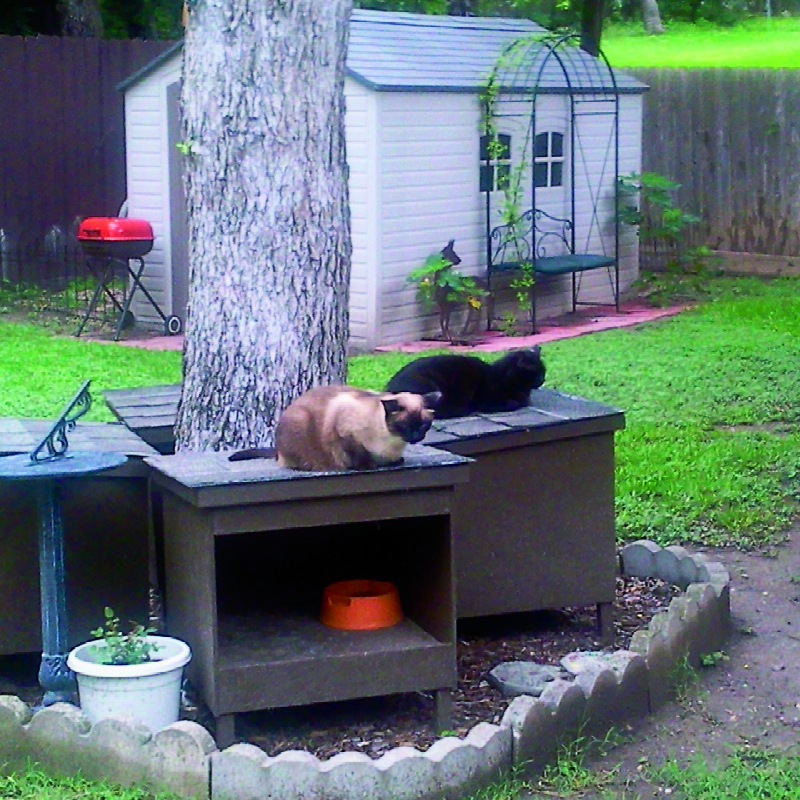
Trapper Tips & Tricks Profile: Penny Leisch
April 14, 2019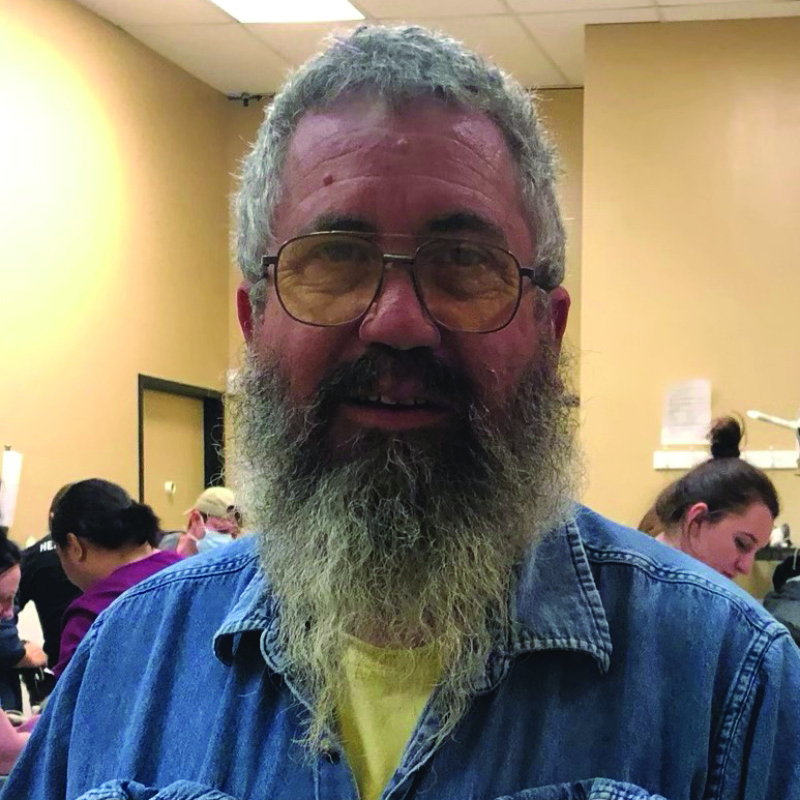
Interview! Keith Williams, C5 (Community Cat Coalition of Clark County)
April 27, 2019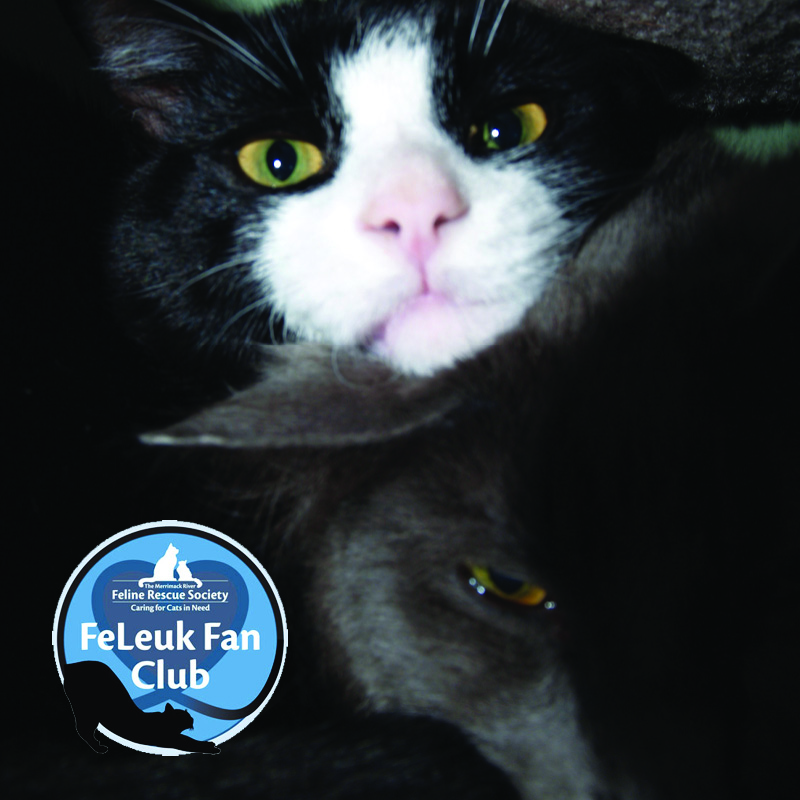
Here’s the next installment in our ongoing series on Feline Leukemia (FeLV) adoption programs around the country. The series shares different groups’ answers to our questions about their FeLV+ adoption programs.
We hope you enjoy and are inspired by this series, and if you have a suggestion for an organization we should consider profiling, please shoot me an email.
For part one of this two-part profile, we’re talking with our very own Stacy LeBaron, founder, and Head Cat at Community Cats Podcast, formerly President and Executive Director at the Merrimack River Feline Rescue Society (MRFRS) in Salisbury, Massachusetts; and with Liz Pease, program assistant at Community Cats Podcast, formerly Director of Operations and Executive Director at MRFRS. They answer the first in our usual series of questions for this series.
Why and when did you start an FeLV+ adoption program?
I want to say around 1998, we had a nursing mom cat that had kittens and was in foster care…Then we found some bottle babies and added them to the group. Mom nursed all the kittens and then when the kittens were brought into the vet to be spayed/neutered, they all SNAP tested positive for FeLV. They were all euthanized. Mom was brought in and tested and even though she had tested negative before, she came up positive this time. Her name was Nala and she was a beautiful, short-haired light grey/calico. She didn’t have a mean bone in her body. She was an awesome kitty.
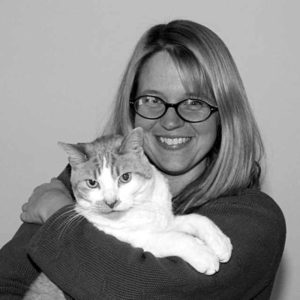 The vet wanted to put her to sleep too, but I said no way… So we had Nala at the shelter. I did the adoption—a seven-year-old girl came in with her mother to adopt a kitty and the girl and Nala hit it off. I spoke with the mother at length, making sure she was OK knowing that Nala might not live a long time, etc. She said finding a cat with the right personality was what was most important and that her daughter would have to learn about life and death—but focusing on life now was what was most important. It was a beautiful adoption and the start of our commitment to not euthanizing FeLV+ cats.
The vet wanted to put her to sleep too, but I said no way… So we had Nala at the shelter. I did the adoption—a seven-year-old girl came in with her mother to adopt a kitty and the girl and Nala hit it off. I spoke with the mother at length, making sure she was OK knowing that Nala might not live a long time, etc. She said finding a cat with the right personality was what was most important and that her daughter would have to learn about life and death—but focusing on life now was what was most important. It was a beautiful adoption and the start of our commitment to not euthanizing FeLV+ cats.
1998 was also when we stopped combo testing feral cats, much to everyone’s concern at the time.
I believe it was 1999 that we trapped the colony of 30 cats in Salisbury, where half were FeLV+ and the other half negative. Under Massachusetts law, they all had to be quarantined, due to a rabies-positive raccoon that had been living in the same shed with them. This is when Mike Cahill from the Massachusetts Department of Agriculture]and I got to be good friends, through figuring out how we could save the lives of these cats.
We had the negative cats in our “sick room” for six months (the MA quarantine period at the time) and the positive group in a volunteer’s renovated basement. Many of the cats were really big kittens. They were all pretty social, as the caregiver was very attentive to the cats. All of the cats were adopted at the end of their six-month stay.
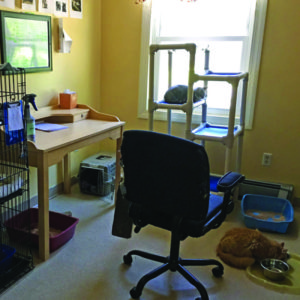 Around that same time, I somehow found an amazing volunteer named Jess. She became a huge advocate for the FIV- and FeLV-positive cats. She made up some great rack cards dispelling all of the myths around both diseases. She ran our FeLV adoption program out of another volunteer’s house. I think in one year she may have adopted out 50+ FeLVs. It was an active program. She was taking in from all over New England and adopting out all over the region. We supported the local cats through a “care for life” program.
Around that same time, I somehow found an amazing volunteer named Jess. She became a huge advocate for the FIV- and FeLV-positive cats. She made up some great rack cards dispelling all of the myths around both diseases. She ran our FeLV adoption program out of another volunteer’s house. I think in one year she may have adopted out 50+ FeLVs. It was an active program. She was taking in from all over New England and adopting out all over the region. We supported the local cats through a “care for life” program.
Then in 2003, we made the commitment to have an on-site FeLV room(my office) in the current shelter. We also were getting involved with our [now closed] feral sanctuary at that time too, so many FeLVs went up that way to the FeLV room there. All in all, we never euthanized a healthy Fiv+ or Felv+ cat after 1998.
Liz: By the time I started in 2007, we were already adopting out FeLV+ cats and supporting them post-adoption through our Care for Life program. I remember them being in Stacy’s office, but we rarely had more than one or two at a time. I remember trapping an FeLV+ cat at Salisbury Beach, and not wanting to put her back out after she tested positive (though I can’t remember why we tested her!). I have a very clear memory of Stacy explaining to me why it as OK to put her back. That was a major milestone in my FeLV and feral cat education.
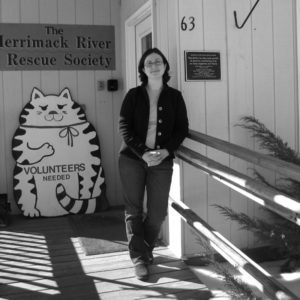 MRFRS re-started a larger-scale FeLV+ adoption program a couple years after I arrived, when we happened to end up with a whole bunch of FeLV+ intakes at once (Chance—an amazing Scottish-fold look-a-like who was one of my favorite cats of all time, and then Holly & all of her kittens—there were six, I think). We needed a place to put them all, so we turned my office (the old gift shop on the main floor) into an FeLV+ room… and then once we started that, there was no turning back because other groups heard about it and started wanting to send cats to us. We quickly had a long waiting list. That never stopped during my time there, and the room was pretty much always full from then on.
MRFRS re-started a larger-scale FeLV+ adoption program a couple years after I arrived, when we happened to end up with a whole bunch of FeLV+ intakes at once (Chance—an amazing Scottish-fold look-a-like who was one of my favorite cats of all time, and then Holly & all of her kittens—there were six, I think). We needed a place to put them all, so we turned my office (the old gift shop on the main floor) into an FeLV+ room… and then once we started that, there was no turning back because other groups heard about it and started wanting to send cats to us. We quickly had a long waiting list. That never stopped during my time there, and the room was pretty much always full from then on.
The FeLV adoption program was one of my favorites, and I always loved doing those adoptions. So many of our adopters came back over and over, even after the pain of losing their FeLV cats, to adopt another one. These cats just made such an impression on people, maybe because, for the most part, they were often so healthy until the very end. And they always seemed to be the sweetest, most gentle cats. Of course, there were some (like Chance) who never got adopted and who lived out their lives and passed away with us. That always made me very sad, but every staff member (and many amazing volunteers) made it their mission to give those cats as much love as possible while they were with us—and to be there with them when they died. I kept a list of all their names, and we kept many of their ashes displayed on a nice shelf in the FeLV room as well.
Next week, MRFRS’s current shelter manager tells us about how the FeLV adoption program works today.




